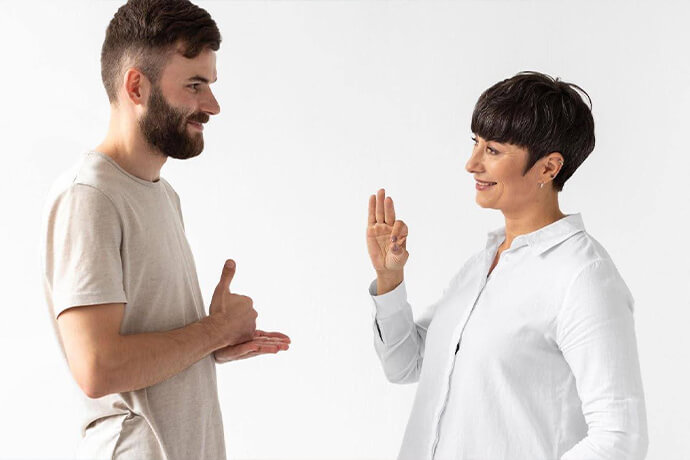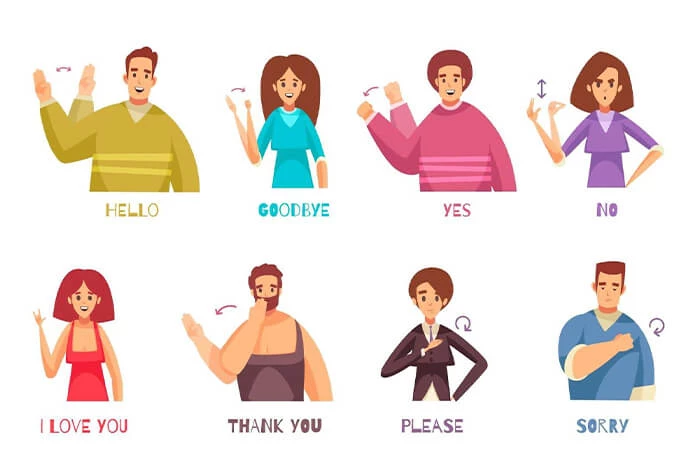 SPEAKERS
SPEAKERS
 TOPICS
TOPICS
Uncover the universal impact of positive cues—facial expressions, gestures, and posture.

Did you know that over 90% of the information we convey relies on body language? Surprisingly, it's not universal. So, why does positive body language play a crucial role in communication? Well, it's all about using facial expressions, gestures, and posture to complement our speech. These non-verbal cues strengthen our message and sometimes convey the true meaning behind our words.
The interesting part is that we're constantly sending signals, even when we're not consciously aware of them. So, when we open the secrets of our own and others' body language, we can elevate our communication skills broadly.
In this post, we'll dive into what body language is, why it matters, and how you can leverage it to your advantage. Let's decode the fascinating connection between body language and effective communication.
Body language is a form of non-verbal communication that includes actions and mannerisms like facial expressions, gestures, posture, head movement, and eye contact.
Whether you realize it or not, you're sending and receiving wordless signals every time you interact with others. Your nonverbal behaviors—those gestures, your posture, your tone of voice, and even how much eye contact you make—speak volumes.
They can make people comfortable, build trust, and draw others towards you. On the flip side, body language in communication can also offend, confuse, and undermine your intended message.
These nonverbal messages don't take a break when you stop talking. Even in silence, you're still communicating through your body language.
The importance of nonverbal communication
Nonverbal communication often takes a back seat and is seen as secondary to language-based communication. The truth is that when you communicate, body language and verbal signs are deeply entwined and are inseparable companions in everyday interactions.
When we speak, our gestures and facial expressions naturally amplify our words, even in situations like phone conversations, where elements like tone of voice come into play.
Why does nonverbal communication matter? Let's break it down into five key roles:

Ever noticed someone's level of interest or focus in a conversation? You've got their full attention when they make eye contact, nod, or lean in. Conversely, leaning back, constant glances elsewhere, or fidgeting may signal boredom or distraction.
But nonverbal cues aren't about attention. They can reveal contradictions between words and thoughts, offering valuable insights into what someone thinks.
Now, let's talk confidence. Practicing confident body language boosts your self-assurance, enhances relationships, and influences how others perceive you. These principles aren't reserved for the stage or a press conference—they apply to you in the workplace.
Want to showcase teamwork, genuine care for the organization, or friendliness with new colleagues? Enter body language. It's your key to expressing enthusiasm, celebrating successes, and fostering better connections with your team.
Here's the deal: you need to embrace body language in the workplace, and you'll find it easier to navigate conversations, achieve your goals, and avoid misunderstandings. Remember, what you don't say with words, your body language can speak volumes. So, skip the teeth-grinding stares and opt for nonverbal cues that build understanding and positive connections in the workplace.
Wondering why body language matters in communication. It's simple—when you speak, it's not just your words that people hear; it's your body language too. Consider it crucial for success in your personal, social, and work life. Your non-verbal cues play a starring role in how the audience interprets and receives your message.
Even if you're the world's best orator, ensure your body language aligns with the truth of your words. It's the key to making your communication truly impactful.